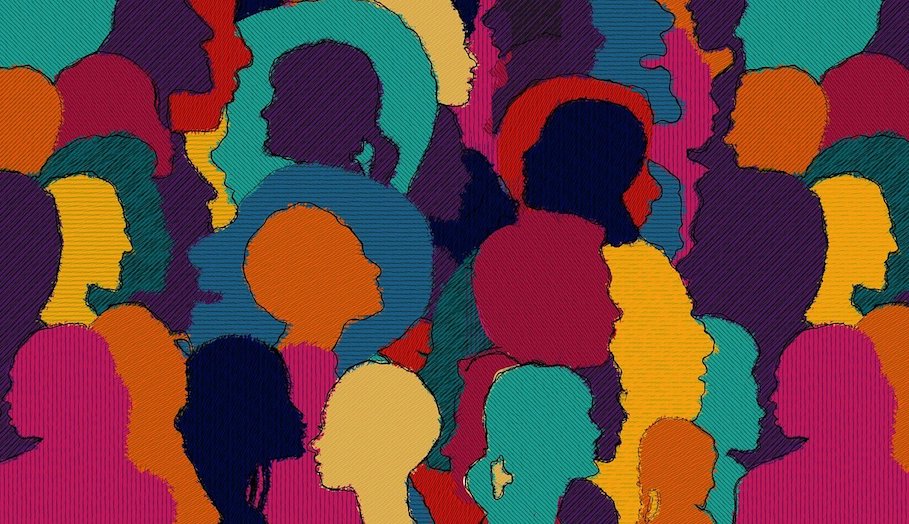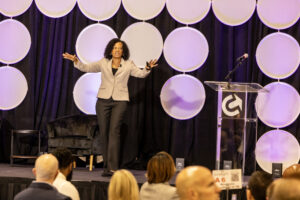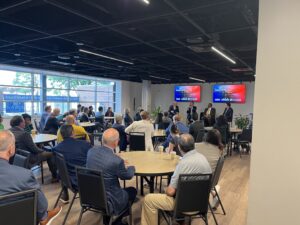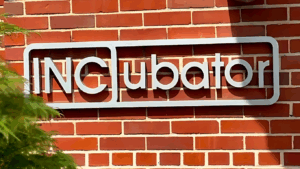According to Essentials of Organizational Behavior by Stephen Robbins and Timothy Judge, surface-level diversity includes the differences in easily-perceived characteristics such as gender, ethnicity or age. Deep-level diversity includes non-observable differences like values, personality and work preferences.
Inclusion at work brings everyone, regardless of their differences, to the same table — creating an environment where all voices are heard, recognized and appreciated.
“As a leader, it is my responsibility to realize, support and promote the intrinsic value of others,” said Katherine H. Burnett, leadership development consultant, The University of Tennessee at Chattanooga. “I/we need to ask ourselves, ‘who is at our table? Do they look, act and believe like me?’ If so, you may have the wrong people at your table.”
If all employees had the same perspective, could innovation take place within an organization? Could organizations reach their highest potential through diversity and inclusion?
Bring on the Benefits
Diverse companies often see increased productivity, more intelligent decision-making and optimized problem-solving. Lauren Turney and Maya Fischhoff write that diversity is a “knowledge-based asset.” When information is assessed through multiple lenses, an organization is more likely to make informed decisions. Quick problem-solving also leads to completing work more efficiently.
Creativity is another asset of diverse organizations. The Boston Consulting Group has even correlated innovation and improved financial performance in organizations. Companies that reported above-average diversity on their management teams reported innovation revenue that was 19 percentage points higher than companies with below-average leadership diversity (comparing 45% revenue to 26%).
An inclusive workplace also leads to higher employee engagement. In today’s climate, organizations are more likely to attract and retain employees (as well as boost their brand and reputation) when they are seen as socially responsible.
Expect Barriers Along the Way
Company leaders can expect challenges when it comes to implementing more D&I within a workplace. If an organization decides to begin implementing diversity initiatives and was previously not diverse, there may be employees who actively resist the changes. If a company is already diverse, there can be communication problems between employees—particularly cultural misunderstandings. Katie Reynold of the Hult International Business School identifies several obstacles that can arise with cultural diversity such as negative stereotypes interfering with teamwork, professional communication being misinterpreted and professional etiquette varying across cultures.
Managers must also be aware of their employees being too siloed in their organization. An organization might be siloed if leadership sees frequent task duplication, broken customer experiences and departments with internal unfamiliarity among colleagues. While individual achievement is important, too much siloed activity can lead to a decreased sense of belonging in an organization.
While more intelligent decision-making is a benefit of diversity, company leaders must be aware that projects can become paralyzed if a team has too many ideas. Team members may struggle to come to a consensus on a project’s direction.
Here’s the Good News!
While there might be challenges to implementing more D&I in your organization, but there are actions that can be taken to overcome the challenges.
If your challenge is project paralysis, think about setting up a small committee within a project team to examine the team’s ideas. Then, the committee will be in charge of deciding how to move forward with the project.
Mitigate communication and cultural issues by defining communication expectations for your organization. Encourage employees to speak up if they are experiencing communication issues. Communication training, such as a Crucial Conversations course, can create alignment within your organization by fostering open dialogue and engagement.
Integrate comprehensive diversity programs into your organization that teach employees about the importance of D&I. Give employees resources to learn from and make sure they understand D&I’s benefits. There are many resources to help managers create a diversity program.
On a local level, UTC offers a series of courses taught by inclusion consultants who design learning journeys that are specific to the context and goals of your business. Once you implement the program, consider how you can recognize and reward employees who are intentional in their diversity efforts. Top-down support is also a crucial aspect of workplace diversity. Leadership should be intentional about aligning organizational values with the D&I values they want to implement into their organization.
Most of all, emphasize respect in your organization. There is nothing more crucial to a successfully-diverse workforce than feelings of mutual respect across the organization.
Author Bio:
Marah Whitaker serves as the marketing assistant for the UTC Center for Professional Education (CPE). CPE manages all of UTC’s non-credit certifications, credentialing & workforce training. We offer a medical career academy, professional development courses & custom corporate training. At UTC, we believe in continuing education and delivering excellent educational programs.










